Waltzing Matilda: the Australians
By Mike Bennighof, Ph.D.
October 2014
It's all Jay Townsend's fault.
I get e-mails from Jay, super-fan of the Panzer Grenadier series, a couple times a week asking for various new installments in his favorite game line. One of the consistent themes in them is a love of Japanese armor and a desire to see more Japanese tanks in action.
One of these came in while I was writing a piece on Australia's Citizen Military Force, the Militia, for our Kokoda Trail book. Looking over the CMF's order of battle, I was already thinking about how to add Light Horse units � Australia's cavalry � to the system. Peter Weir's Gallipoli has been one of my favorite movies since my grandmother recommended it on its first run. When Jay's note arrived, things just clicked together: he could have his hordes of Japanese armor, and they could fight the Australian Militia (which included the Light Horse) in a downloadable Panzer Grenadier supplement.
That would also let me include the Australian 1st Armoured Division, which I'd planned at some point to add to our Alamein game with a Daily Content piece but appear to have never gotten around to actually doing before the game went out of print. Anyway, it seemed that I had the makings of a pretty strong package.
Our "Instant Gratification" line of downloadable games and supplements allowed us to produce unusual items like Waltzing Matilda, the product that resulted. They were for the most devoted fans, featuring topics that we could never hope to sell as a standard, printed product but could offer to those who really want them. Here's a look at some of the new toys within, today the Australian half of the mix:
Foot Soldiers
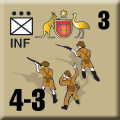 
Australian Militia units were organized on the same tables of organization as their Australian Imperial Force (AIF) counterparts, seen in Afrika Korps. Like their British, Indian and New Zealand comrades, the Australian pieces are rated slightly lower than German platoons � a Commonwealth infantry company was divided into four platoons rather than the three of most other armies, with platoons somewhat smaller as a result.
Australian troops deployed in the Western Desert had a liking for extra automatic weapons, adding hundreds of German and Italian weapons, plus extra Vickers guns "borrowed" from other units, to their order of battle. The Militia had no opportunity to follow suit of course, and Australian troops deployed to New Guinea were disgusted by the low quality of the Japanese Nambu machine gun and didn't bother to pick up the few undamaged examples found along the Kokoda Trail.
The Light Horse
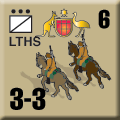
Australia's Light Horse regiments emerged from the Great War with enormous public prestige, having scored brilliant victories over the Turks and Germans in Palestine. The Light Horse suited Australian culture, drawing on the model of Outback life admired by many. Light Horse troopers were neither, by definition, cavalry or mounted infantry, but melded missions of both unit types. They usually fought dismounted and few regiments carried sabers, yet they also performed traditional cavalry tasks like screening or reconnaissance.
Australian society's increasing motorization, and decline in exports after 120,000 horses were sent to the Middle East during the Great War, took a toll on the tough Waler horses that carried the Light Horse. By 1939 the breed was in decline, and enthusiasts trying to re-establish the breed in recent years have had to draw on feral horses to replenish the bloodline. Sufficient horses were recruited to mount two full cavalry divisions plus some separate regiments, but remounts would have been harder to find than in the previous war. The Australians converted their Light Horse to armored and motorized units, and none remained mounted by war's end.
Armor

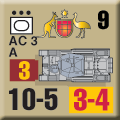 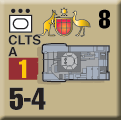
Like the other Dominions, Australia sought to establish its own armored division. And like the other Dominions, the Australians found it very difficult to extract tanks and other vehicles from the British. Undaunted, they decided to build their own. The "Australian Cruiser," or AC 1, matched a turret and upper hull based on the well-regarded British Crusader with an engine, drive train and lower hull based on the American M3 Grant. Sixty-five of them, also known as the "Sentinel," were built in Sydney during 1942. Unable to obtain the desired engines, the Australians fitted their tanks with three Cadillac V8 auto engines. None of these tanks saw any combat.
Unsatisfied with the tank's armament, the Australians fitted a 25-pounder in a modified turret as a close-support vehicle, with armor-piercing performance quite sufficient to knock out Japanese tanks. This AC 3 version never entered production, but it likely would have if invasion had been thought imminent, so we included it in the mix.
 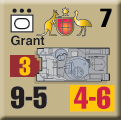 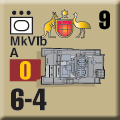
Australia did eventually receive some British armor, with outdated and nearly useless Mark VIb light tanks arriving for training followed by Matilda II infantry tanks shipped out from the Middle East as they were replaced in the front lines by better vehicles. The Australians modified two dozen of their Matildas as flamethrowers, known as FROGs.
The Netherlands East Indies had embarked on an energetic program to set up five mechanized brigades on the island of Java. But few tanks were available for export, and the Dutch turned to the firm of Marmon-Herrington in the United States, which had failed to sell its line of tiny tanks to the American armed forces. The Dutch ordered hundreds of them, some of which were diverted to Australia when the East Indies fell to the Japanese.
With Britain unable to support Australian needs, the government turned to the United States for official shipments as well. By the spring of 1942, the 1st Armoured Division had been fully equipped with Grant medium tanks and Stuart light tanks, and enough tanks ere on hand or on the way to convert the Militia's two cavalry divisions in to armored units as well.
Artillery
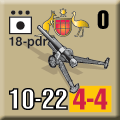 
Australia made do with British weapons in its artillery branch, with most Militia divisions having the 18-pounder of Great War vintage. This weapon had good armor-piercing performance and would see use in the Middle East as an anti-tank gun. Even the favored AIF divisions at first had the 18-pounder in their artillery regiments (as did British Territorial units deployed to France).
Australian batteries first received the modern 25-pounder in 1940, and the Australian Army was quite impressed. With few guns available from the British, Australia began manufacturing her own with the first gun rolling off the assembly line in May 1941. Over 1,500 would be built in Australia, enough to equip all Australian batteries with this excellent weapon. Another 200 "Short" models would be built later in the war, weapons more suitable for jungle warfare.
Armored Cars
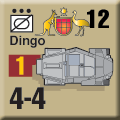 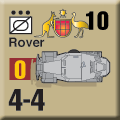
Australia required armored cars for the reconnaissance elements of her new armored divisions, but as with tanks she could not acquire enough fo them from British sources. The Dingo scout car, based on a Ford truck chassis with Marmon-Harrington all-wheel drive, began production in 1941 at Victorian Railways. Over 200 were built, but the Australians wanted a heavier version and Ruskin, a Melbourne firm, provided the Rover armored car in the spring of 1942, also building over 200 units. Though the Australian Army wanted a better-protected vehicle, the Rover turned out to be slower and more lightly armored. Both were armed with machine guns only, one Bren in the Dingo and a Bren and a Vickers in the Rover. Once American-made armored cars began to arrive in 1943, the Australians re-assigned their home-made vehicles to training establishments and none of them saw actual combat.
It's a large order of battle at 165 pieces, including plenty of trucks and Bren and ACW carriers plus a couple of aircraft. Next up, we'll take a look at the Japanese in Waltzing Matilda and their masses of tanks.
Mike Bennighof is president of Avalanche Press and holds a doctorate in history from Emory University. A Fulbright Scholar and award-winning journalist, he has published over 100 books, games and articles on historical subjects.
He lives in Birmingham, Alabama with his wife, three children and his dog, Leopold.
|
